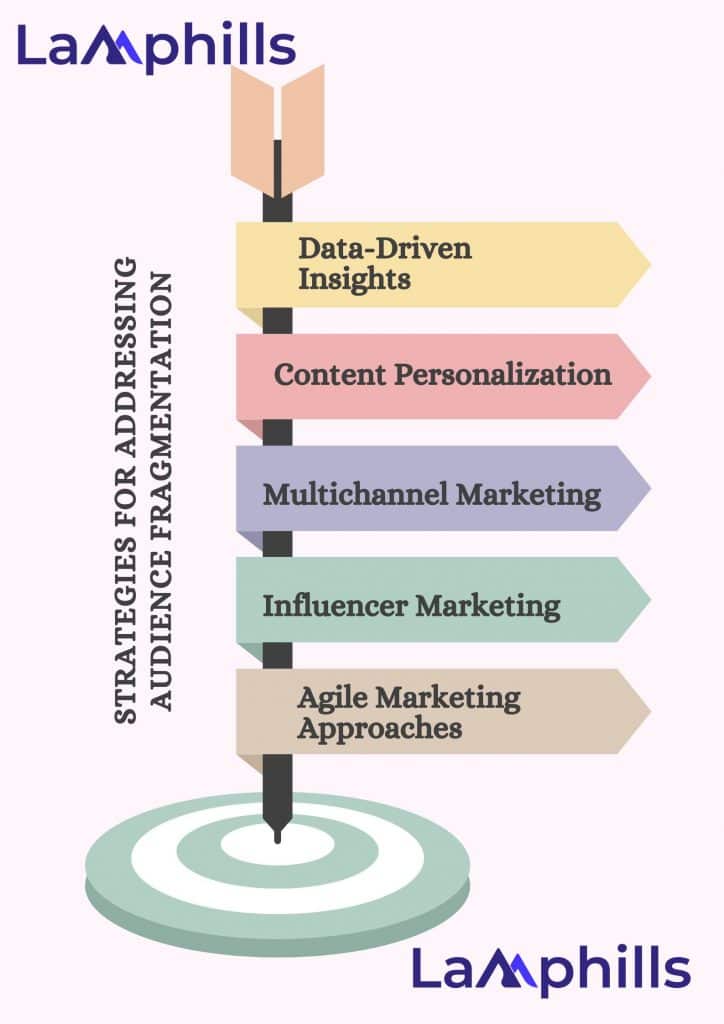Have you noticed how we all watch different shows, read different news, and follow different influencers? This is what’s called fragmented media and audience fragmentation. It’s like we’ve all got our little media bubbles now. I remember when I used to chat with friends about the latest T.V. show everyone was watching, but now, it’s rare to find someone watching the same thing as me! How did we get here, and what does it mean for how we connect and share experiences? Let’s dive into this fascinating shift and explore how our media habits have changed.
Key Points
- This fragmentation means audiences are scattered across many channels, making it challenging for advertisers to reach everyone effectively. Marketers must adopt more targeted and specific strategies to engage distinct audience segments to navigate this shift.
- Traditional advertising methods, such as linear TV ads, are becoming less effective because audiences are no longer concentrated in one place. Marketers must adapt, using audience insights to guide their ad placements across various platforms and channels.
- Fragmented Media allows advertisers to find less competitive and often cheaper ad spaces. Advertisers can think beyond popular programs and explore niche media forms by utilizing media mix insights.
- An omnichannel advertising approach can save money and reduce budget waste by spreading ad spending across platforms where the audience is active. Proper targeting and following audience media mixes ensure that ad budgets align with where the audience’s attention is focused, maximizing efficiency and impact.
- Audience fragmentation makes it tough for single-channel advertisers to achieve the necessary ad frequency for engagement. Using audience insights to create an omnichannel presence ensures ads are seen across TV, streaming, and social networks, creating a surround-sound effect.
What is Fragmented Media?

Credit:vectorjuice
Media fragmentation describes how audiences have scattered across more media channels than ever, causing major headaches for advertisers. You’ve probably noticed this change in your media habits, not to mention those of your target audience. We’re all looking at different screens and interacting with various forms of media. US adults spend about 7 hours a day on screens, and they’re not sticking to just one place. With so many people cutting the cord on cable, it’s clear that audiences are making the most of their endless media options.
Fragmented Media in Action
For advertisers, this means reaching the right people is tougher than ever. This shift is a big deal if you’re used to pouring your entire ad budget into linear TV. “When only about half of the people you want to reach are actually watching linear TV, it’s not going to be as effective anymore,” says Amanda Beadle, Tunnl’s VP of Audiences and Analytics. “You used to be able to count on reaching a large part of the country with a big TV budget. Now, TV viewership habits have changed, and big budgets don’t guarantee you’ll reach everyone you need to.”
Importance of Fragmented Media
Media fragmentation is crucial in digital marketing, highlighting how consumers now access and interact with various media channels differently. With so many devices, platforms, and types of content available, audiences have become fragmented, making it harder for marketers to reach them through a single medium.
To keep up, marketers need to create relevant and engaging messages across multiple channels while keeping their brand’s communication consistent. Understanding media fragmentation helps marketers be more strategic, ensuring they use their resources wisely, reach their target audience effectively, and achieve better engagement and return on investment in a complex and competitive digital world.
How Marketers Respond to Fragmented Media
Media fragmentation isn’t just a trend; it’s here to stay, even as some streaming services start bundling together (like Disney+ and Hulu). Traditional advertising methods might not work as well in this new landscape.
“If advertisers aren’t considering media fragmentation when planning their buys and stick to their old strategies, they might overspend in less effective areas and miss better opportunities to connect with their audience,” says Amanda Beadle, Tunnl’s VP of Audiences and Analytics. “This is especially true for political campaigns, which often lag behind what brands are doing.”
Some marketers respond by increasing their spending on traditional TV ads, hoping to reach their audience through more frequent ads. This might work if your audience prefers traditional TV, but it also means competing with other advertisers in a crowded market.
Ignoring media fragmentation can lead to missed opportunities based on how your audience prefers to consume media. To keep your campaigns effective, you need to understand where your audience is and how they interact with different media.
Successful advertisers know that understanding media fragmentation isn’t enough. They need to know exactly how their target audience is spread across the new media landscape.
Audience Fragmented Media
Audience fragmentation is when a previously unified group of people splits into smaller, distinct segments. This happens because of changes in how people consume media, shifts in demographics, varied consumer preferences, and the explosion of different communication channels and platforms.
In simpler terms, it means the once cohesive mass audience is now divided into smaller groups, each with its unique traits, interests, and behaviours. This makes it harder for marketers, advertisers, and content creators to connect with their audience, requiring them to adopt more targeted and specific strategies to engage these different segments effectively.
Download this Checklist for Creating Personalized Content for Different Audience Segments now and start creating personalized content that truly engages and converts!
What Is an Example of Audience Fragmented Media
- Streaming Platforms: With the rise of streaming services like Netflix, Hulu, Amazon Prime Video, Disney+, and HBO Max, audiences are spread out across many platforms. This makes it harder for digital marketers to reach everyone effectively and engage meaningfully.
- Social Media Channels: There are many social media platforms, including Facebook, Instagram, Twitter, LinkedIn, TikTok, Snapchat, and Pinterest. Different people prefer different platforms, so marketers need to create targeted strategies for each one to reach and engage their audience effectively.
- News Websites and Blogs: Many websites, blogs, and news portals offering information and entertainment fragment the online media landscape. Digital marketers need to know which sites their target audience visits and tailor their messages accordingly to ensure their efforts are relevant and resonate with potential customers.
Factors Contributing to Audience Fragmented Media

Dc Studio
Fragmentation can be both good and bad, depending on the situation. While it allows for personalized messaging, it also requires a more strategic and flexible approach to ensure the positives outweigh the negatives.
Here are three main factors driving audience fragmentation:
#1. Media Platforms and Channels
A key factor in audience fragmentation is the explosion of media platforms and channels. In the past, traditional media like TV, radio, and newspapers were the main sources of information. Today, we have a variety of digital platforms, including social media, streaming services, podcasts, websites, and mobile apps, each targeting different interests and demographics. Content creators now produce specialized content for specific audience segments, causing audiences to spread across numerous platforms to find content that fits their interests. Additionally, consumers often multitask, like watching TV while browsing social media on their phones, further fragmenting their attention.
Read: Best Influencer Management Platforms and Software In 2024
#2. Consumer Preferences and Behaviors
Today’s consumers have diverse and specialized interests, seeking content and products that match their unique passions and values. This variety of interests drives audience fragmentation, as marketers need to cater to various niches. Modern consumers also expect on-demand content and products, shifting from traditional scheduled viewing or shopping to personalized experiences. They often use ad-blocking tools or skip ads, meaning that even when marketers reach their target audience, engagement can be low due to a preference against traditional advertising.
#3. Technological Advancements
Advancements in data analytics have allowed marketers to understand their audiences better than ever before, resulting in more precise segmentation based on demographics, psychographics, and behaviour, further emphasizing audience fragmentation. A.I. and machine learning drive content personalization and recommendation systems, ensuring each user sees unique content, contributing to fragmentation. The spread of mobile devices and the Internet of Things (IoT) means consumers can access media from various devices, fragmenting the audience as people move seamlessly between screens and channels.
Developing strategic methods to address these challenges is crucial as we deal with audience fragmentation. The next section will explore effective strategies for coping with this fragmentation.
Strategies for Addressing Audience Fragmentation
Here are some strategies to help you navigate audience fragmentation:

#1. Data-Driven Insights
Using data-driven insights is crucial for effective audience segmentation. These insights help you create and refine audience segments, personalize messaging, support targeted campaigns, and measure the success of each segment.
- Data Analysis: Analyzing large datasets helps identify patterns and trends within your audience, such as demographics, location, behaviour, or purchase history, to segment them effectively.
- Segment Discovery: Data insights can reveal unexpected audience segments that may not be obvious.
- Continuous Monitoring: Ongoing data collection allows you to refine segmentation based on changing audience behaviours and preferences.
- Performance Analysis: Assessing segment performance helps identify which segments respond well to your efforts and which need adjustment.
- Data-Backed Decision-Making: Use data insights to allocate resources efficiently, focusing on segments most likely to convert.
- A/B Testing: Test different strategies to see what works best for each segment and refine your tactics accordingly.
#2. Content Personalization
Tailoring content to specific audience segments helps address fragmentation by making your messaging more relevant and engaging.
- Catering to Niche Interests: Create content that speaks to the unique interests of different segments.
- Increasing Engagement: Personalized content is more likely to capture attention and encourage interaction.
- User-Centric Approach: Personalization shows that you understand and value your audience’s preferences.
- Reducing Information Overload: Delivering relevant content helps avoid overwhelming your audience.
- Tailored Product Recommendations: Suggest relevant products based on user behavior and preferences.
- Customized Calls to Action: Use personalized CTAs to drive desired actions.
- Long-Term Engagement: Consistently delivering valuable content fosters strong customer relationships and loyalty.
Read: The Biggest Content Personalization Mistakes You’re Probably Making (And How to Fix Them)
#3. Multichannel Marketing
Reaching audiences across multiple platforms is essential to combat fragmentation.
- Utilize Traditional and Digital Platforms: Balance traditional media like TV with digital platforms for interactive engagement.
- Leverage Social Media: Use social media to share tailored content and engage with different audience segments.
#4. Influencer Marketing
Collaborate with influencers to reach your audience where they spend time online. Influencers have built trust with their followers, making their endorsements powerful for building brand awareness and credibility.
Read:10 Most Resounding Influencer Marketing Fails in History (Lessons to Learn)
#5. Agile Marketing Approaches
Agile marketing emphasizes adaptability, collaboration, and responsiveness to improve marketing effectiveness.
- Iterative and Incremental: Break down projects into smaller tasks and cycles, building on each iteration.
- Customer-Centric: Align closely with customer feedback and insights to ensure your efforts resonate with your audience.
- Collaboration: Foster communication and knowledge sharing within cross-functional teams.
- Flexibility and Adaptability: Quickly adjust strategies and tactics to changing market conditions and consumer behaviors.
Navigating audience fragmentation offers both challenges and opportunities in today’s digital age. You can effectively reach and engage your target audience across various platforms by leveraging data-driven insights, content personalization, multichannel marketing, influencer collaborations, and agile approaches. These strategies will be crucial for success as the digital landscape evolves.
Download this Influencer Marketing Campaign Checklist today and start building influencer partnerships that drive engagement, build trust, and boost your brand’s visibility. Don’t miss out on this
Advantages of Audience Intelligence Amidst Media Fragmentation
- Previously, everyone watched broadcast TV, making it the main place for ads. This led to high competition and costs for ad space. Now, audiences are spread across streaming services and social networks, allowing advertisers to place ads in less competitive spaces if they know where to look.
- By exploring different channels and platforms, media mix insights help you find these less crowded, often cheaper, ad spaces. While no ad platform is free from competition, some are less crowded, helping you reach your audience more efficiently with your budget.
- An omnichannel approach might sound more expensive, but it saves money by effectively reaching your dispersed audience. Instead of spending big on oversaturated networks, diversify your ad spend across platforms like TikTok, LinkedIn, Hulu, and Roku, where your audience is active.
- Diversifying your ad spend trims the fat off your campaigns and maximizes your budget by focusing on where your audience is. Be careful to target your ads well; a scattered ad portfolio could cost more if done on a platform-by-platform basis without precise targeting.
- Following audience media mixes to guide your buy ensures your budget aligns with where your audience’s eyes are across multiple ad platforms. Your audience needs to see your ad multiple times before they act on it, and media fragmentation makes this difficult for single-channel advertisers.
- Using audience insights to create an omnichannel presence ensures your ads are seen across TV, streaming, and social networks, making an impact inevitable. Placing ads where your audience consumes media creates a surround sound effect that drives action.
- Insight-driven, omnichannel advertisers who adapt to media fragmentation achieve higher ROAS (Return on Ad Spend) by ensuring their ads are seen in the right places and by the right people as often as needed.
Related Articles
Integrated Communication in the Digital Age
Relevance Of Enterprise Performance Management
The Biggest Content Personalization Mistakes You’re Probably Making (And How to Fix Them)






